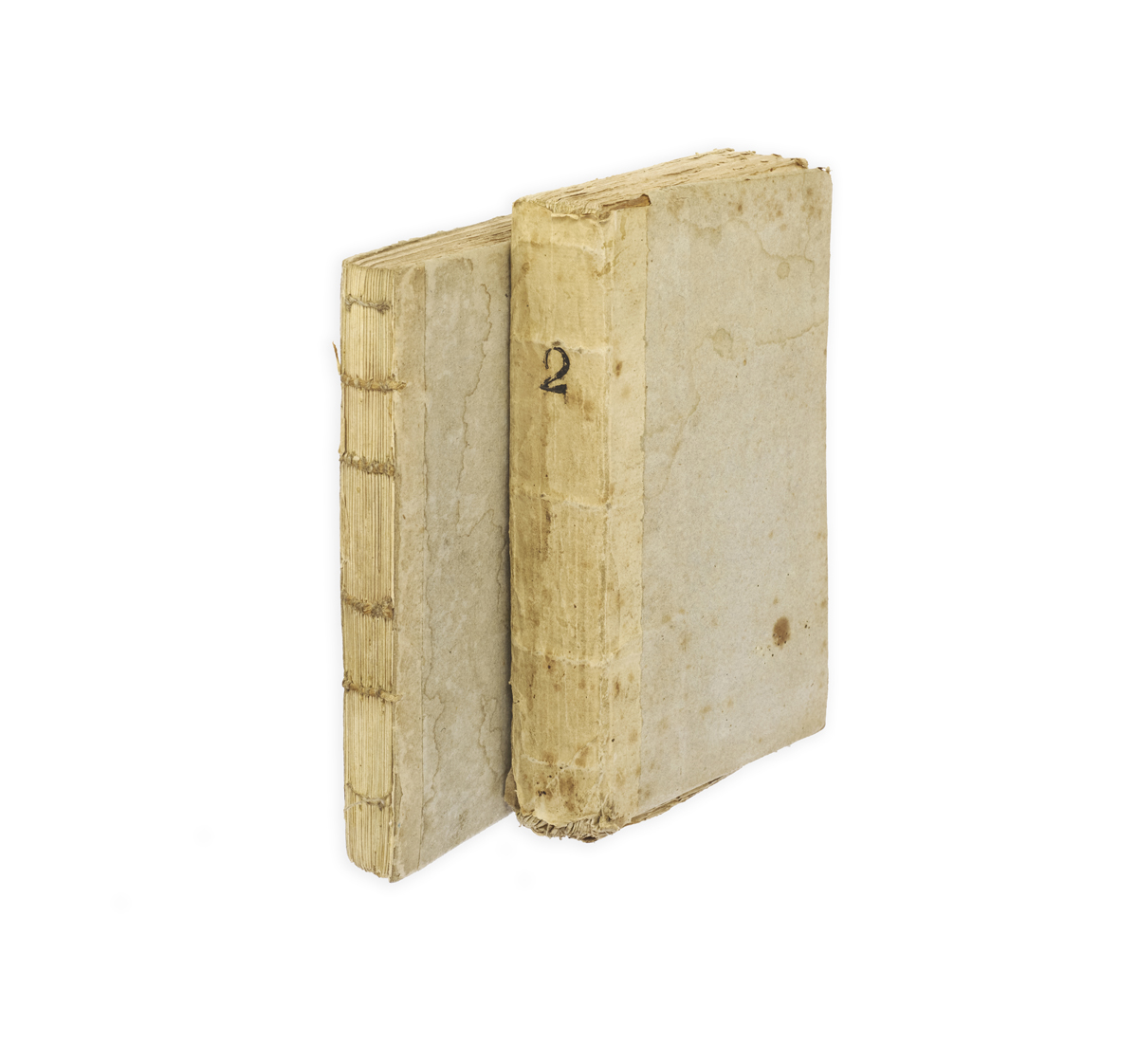
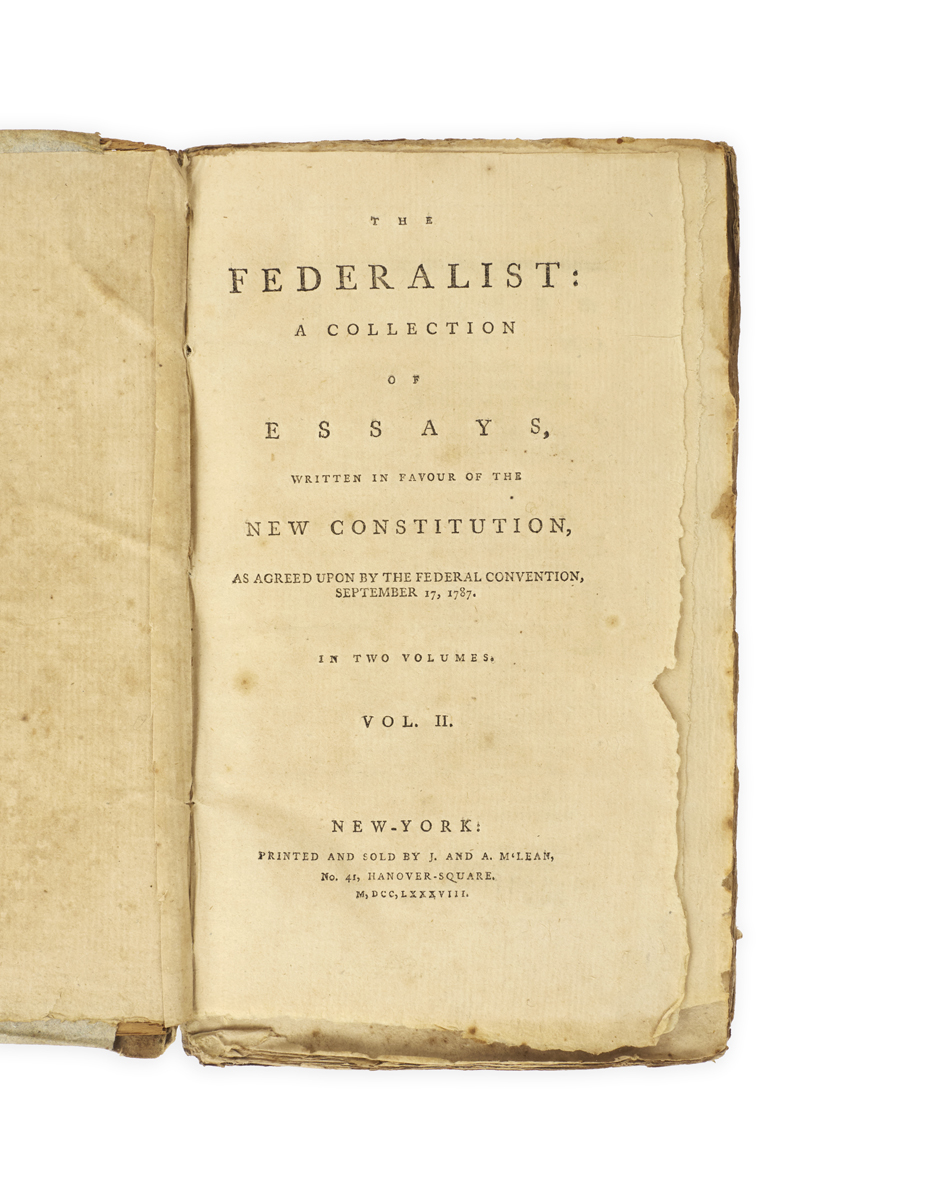
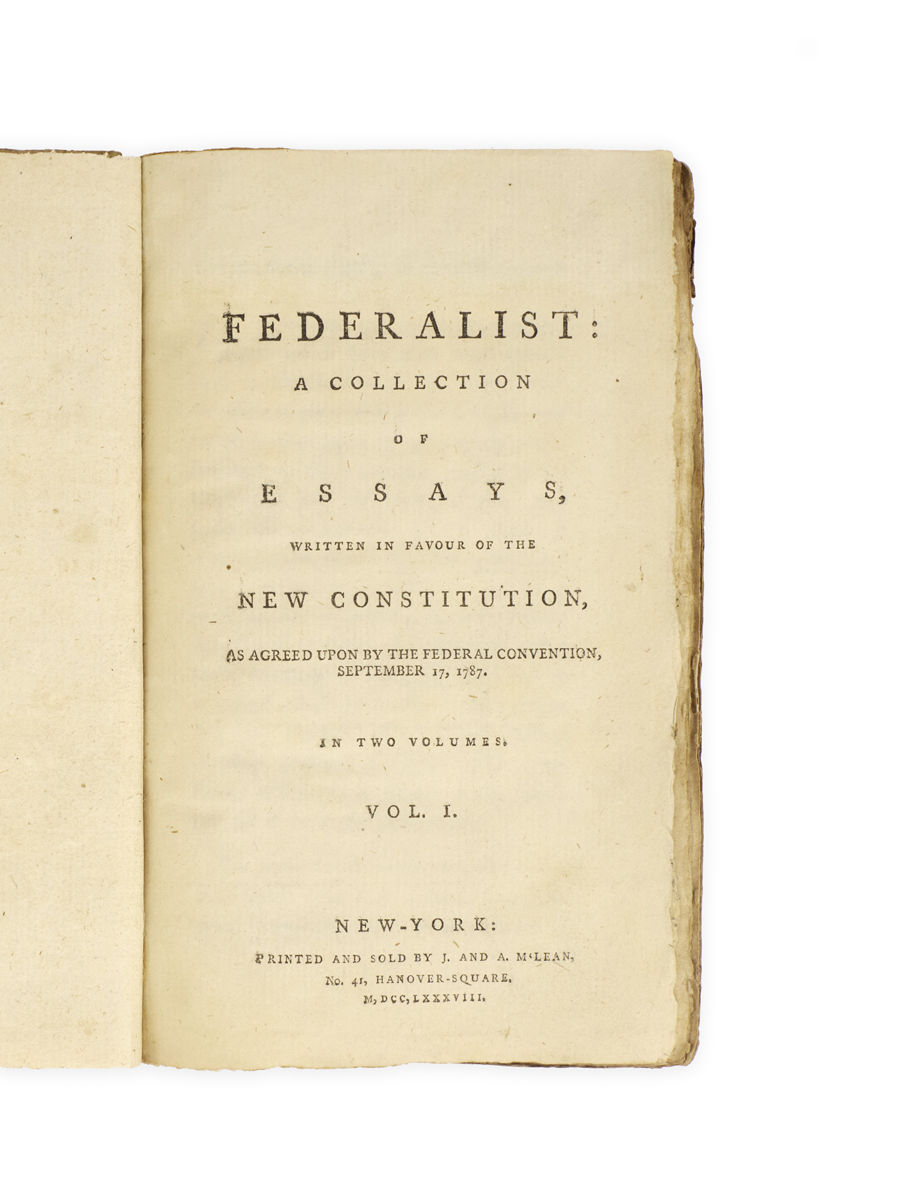
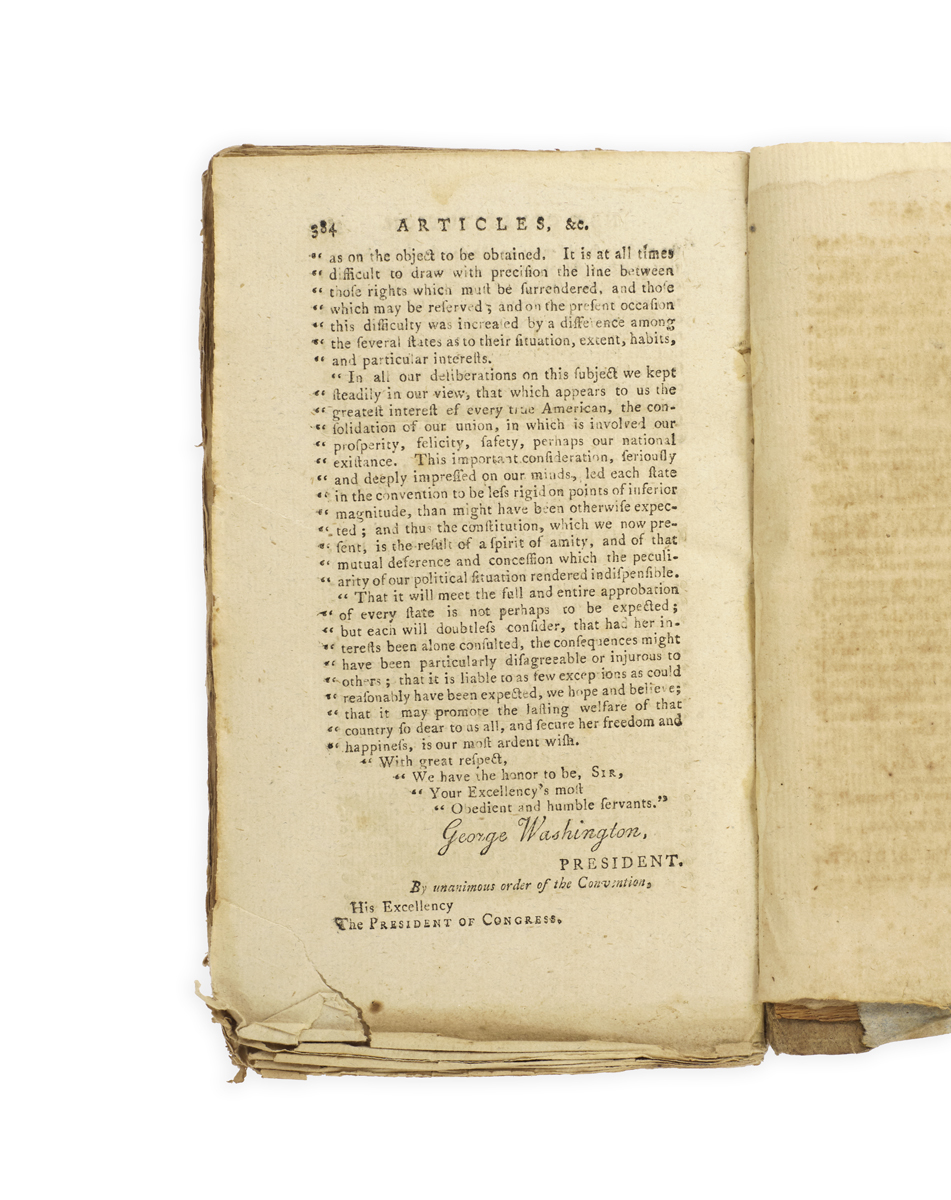
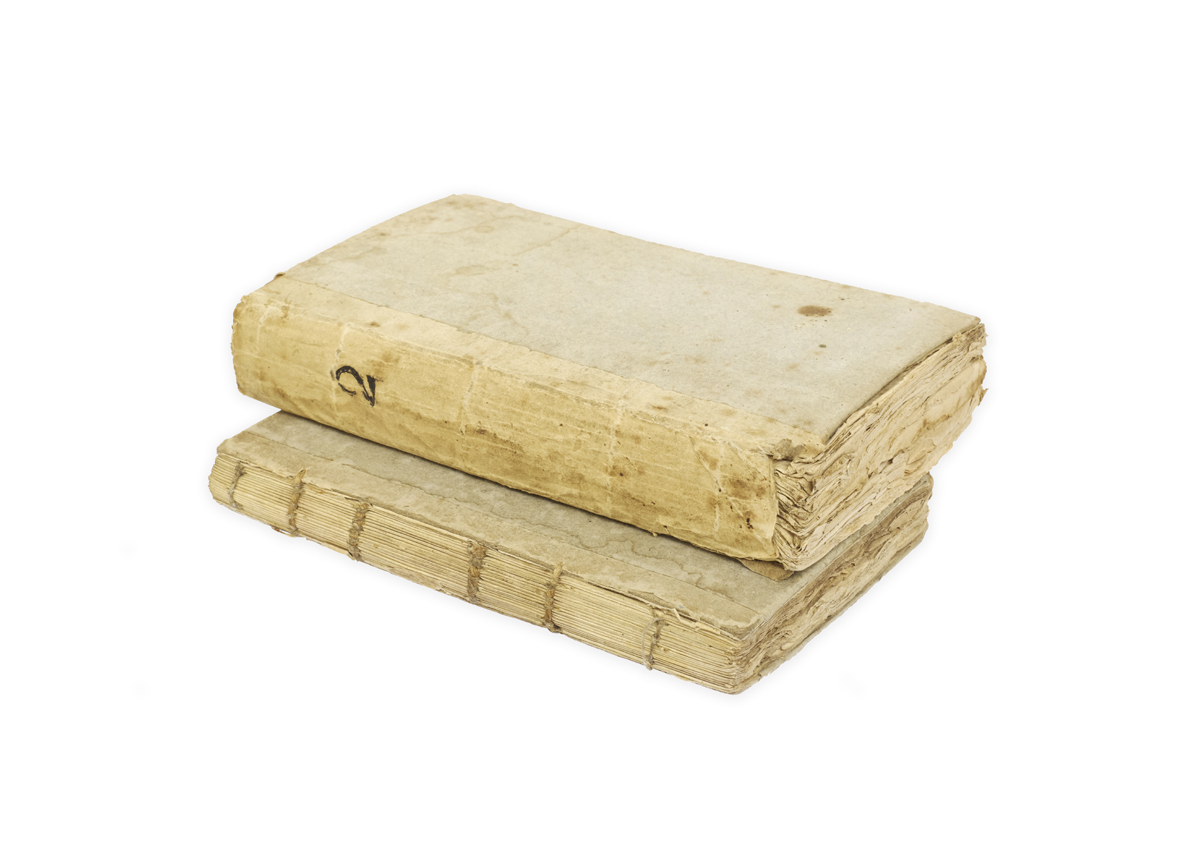
THE FEDERALIST PAPERS
IN ORIGINAL BOARDS
[HAMILTON, Alexander, James MADISON, and John JAY].
The Federalist: A Collection of Essays written in Favor of the new Constitution, as agreed upon by the Federal Convention, September 17, 1787 …
New York: Printed and sold by John and Andrew M’Lean … 1788.
Two vols, 12mo, pp. I: vi, 227, [1 (blank)], II: vi, 384; title-page of vol. I very neatly restored at head with old paper (possibly the original conjugate blank, which has been replaced) above the line ‘Federalist’, with loss of the word ‘The’, a few gatherings in vol. I slightly browned, paper flaw to vol. I G5 with loss to outer margin (just shaving text); vol. II quire X bound in duplicate in error (no loss), printing flaw to vol. II p. 290 where the paper was folded in the press (no loss), two marginal tears (no loss) to the last leaf; apart from the restoration to the title-page, an excellent copy, uncut, in the original boards, vol. II on slightly largely paper as usual, vol. I unopened after p. 117, vol. II entirely unopened, spine of vol. II stamped ‘2’ in ink; spine of vol. I wanting, some light damp-stains to boards; partially obscured pencil inscription to upper pastedown vol. I ‘W. Brown / Dr R / long let’ (see below).

Added to your basket:
The Federalist: A Collection of Essays written in Favor of the new Constitution, as agreed upon by the Federal Convention, September 17, 1787 …
First edition in book form of The Federalist Papers, the single most important work of American political philosophy, a normal paper copy, very rare in the original boards, uncut and largely unopened. Volume II is in a mixed state, with the error ‘Letter LXXX’ rather than ‘LXX’ uncorrected on p. 240, but the spine lettered ‘2’ not ‘II’.
A ‘commentary on the Constitution by men included among its principal architects’ (Printing and the Mind of Man), The Federalist ‘will merit the notice of posterity; because in it are candidly and ably discussed the principles of freedom and the topics of government, which will be always interesting to mankind so long as they shall be connected in Civil Society’ (George Washington).
Provenance:
Inscribed in pencil ‘W. Brown / Dr R/ long let’. Could this plausibly by Dr William Brown and Dr Benjamin Rush? Brown (1748–1792), educated in Edinburgh, returned to set up practice in Alexandria, Virginia, where he was known to Washington (whose diary records a number of visits by Brown and his wife in the early 1770s); he joined the second Virginia Regiment as a surgeon in 1775 and was appointed Surgeon General for the Middle District by Congress in May 1777, spending that winter with Washington at Valley Forge. In February 1778 he was promoted to Physician General, replacing Dr Benjamin Rush (1745–1813). After the war (Congress had accepted his resignation in 1780), Brown rented George Washington’s house in Alexandria from 1783 to ’86 (the same later occupied by Bushrod Washington), and helped found the Alexandria Academy in 1785, of which Washington was a trustee. Rush, who had like Brown studied medicine in Edinburgh, and returned to set up practice at the same period, was representative of Pennsylvania and signatory of the Declaration of Independence, but had resigned from Army service in 1778 after the discovery of a letter critical of Washington. In 1787 he returned to politics as a member of the Pennsylvania ratifying convention for the new Constitution, leading the movement for its adoption.
PMM 234.